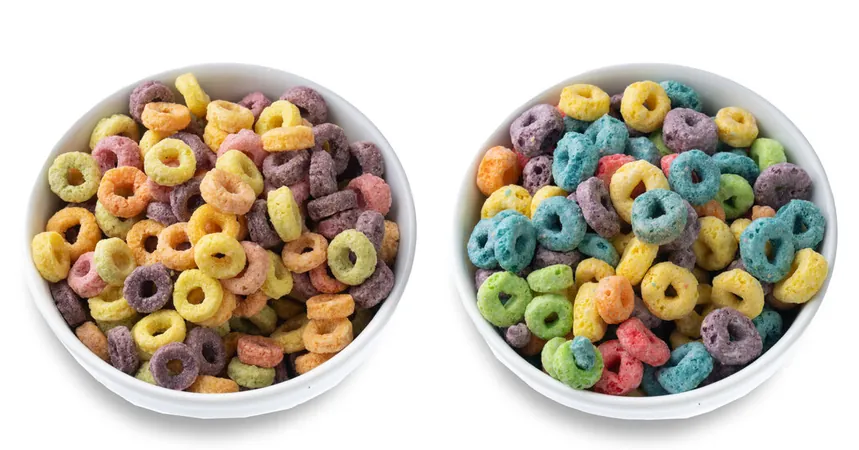
RFK Jr. Pushes to Ban Synthetic Food Dyes: Are Manufacturers Ready to Change?
2025-04-25
Author: Ting
A Colorful Controversy
Same beloved cereal, same sugary flavor, but a stark contrast in colors. In the U.S., Froot Loops glow with vibrant synthetic colors like Red No. 40 and Yellow No. 5. However, in Canada, the iconic cereal showcases muted hues sourced from natural ingredients such as blueberry and watermelon. The big question remains: will U.S. companies, particularly WK Kellogg, be bold enough to adopt these natural colorings?
Kennedy's Bold Plan
Robert F. Kennedy Jr., Secretary of Health and Human Services, is advocating for a significant change. On Tuesday, he announced an 'understanding' with major food producers to eliminate petroleum-derived dyes by 2026. This announcement raises eyebrows; no major companies were present at the press conference, and many remain undecided about removing these colorants, even as the FDA permits their use.
Industry Hesitation and Consumer Demand
Yet, the winds of change might be stirring. PepsiCo has indicated plans to phase out synthetic colors, responding to growing consumer demand for natural options in their products. However, for some critics, Kennedy's announcement fell short. Dr. Peter Lurie, a former FDA official, argues that relying on voluntary compliance from food companies is misguided.
Natural Colors: A Tough Transition
Transitioning from synthetic to natural colors won't be simple. James Herrmann from Sensient Technologies highlights that developing natural dyes involves time-consuming processes from seed development to production. Additionally, natural colors face challenges like instability under light and warmth.
The Safety Debate
Public concerns surrounding synthetic dyes, especially regarding children's behavior, are escalating. A 2021 health assessment in California linked these dyes to issues like hyperactivity in sensitive children, leading to warnings on products in Europe. While Health Canada maintains safety standards for dyes, many consumers are increasingly cautious.
A Taste for Color
Interestingly, while color might not affect taste directly, it influences consumer perception significantly. As Charles Spence from Oxford University notes, duller colors can be interpreted as less flavorful, while vibrant colors signal intensity. Despite a promising trend toward natural colors in recent new products, established brands hesitate to eliminate synthetic hues.
What's Next?
As consumer awareness grows, food manufacturers will need to pay attention to evolving tastes. With a shift in public sentiment toward natural ingredients, the pressure is mounting for companies to rethink their color strategies. Will Kennedy's vision inspire real change, or will the food industry continue to cling to its colorful past?

 Brasil (PT)
Brasil (PT)
 Canada (EN)
Canada (EN)
 Chile (ES)
Chile (ES)
 Česko (CS)
Česko (CS)
 대한민국 (KO)
대한민국 (KO)
 España (ES)
España (ES)
 France (FR)
France (FR)
 Hong Kong (EN)
Hong Kong (EN)
 Italia (IT)
Italia (IT)
 日本 (JA)
日本 (JA)
 Magyarország (HU)
Magyarország (HU)
 Norge (NO)
Norge (NO)
 Polska (PL)
Polska (PL)
 Schweiz (DE)
Schweiz (DE)
 Singapore (EN)
Singapore (EN)
 Sverige (SV)
Sverige (SV)
 Suomi (FI)
Suomi (FI)
 Türkiye (TR)
Türkiye (TR)
 الإمارات العربية المتحدة (AR)
الإمارات العربية المتحدة (AR)